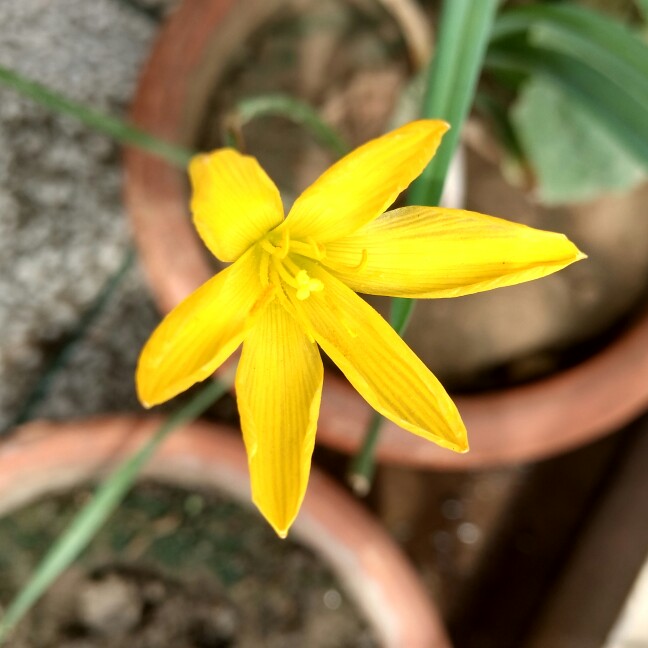
Zephyranthes citrina
Yellow Rain Lily
Rain lilies are so named because they flower after heavy rain. The flowers are somewhat crocus-like, with grass-like leaves. The flowers tend to last only a day or two, but are replaced in succession with new flowers. The flowers are funnel-shaped, upward-facing, and have 6 petals, and come in yellows, whites, oranges, reds and pinks. Zephyranthes citrina sports primrose yellow, star shaped, cupped flowers which are borne in profusion atop the dark green soft rush-like foliage after a summer rain.
Contributed by @AnkitaPKarthik
-
Full sun
-
Occasional watering
-
A little frost hardy: 32F (0°C)
-
Moist and free draining
Common name
Yellow Rain Lily
Latin name
Zephyranthes citrina
type
Bulb
family
Amaryllidaceae
ph
6.1 - 7.4 Acid - Neutral
Plant & bloom calendar
-
Best time to plant
-
When the plant will bloom
full grown dimensions
 0.30 M
0.30 M
0.30 M
0.30 M
Zephyranthes citrina
Rain lilies are so named because they flower after heavy rain. The flowers are somewhat crocus-like, with grass-like leaves. The flowers tend to last only a day or two, but are replaced in succession with new flowers. The flowers are funnel-shaped, upward-facing, and have 6 petals, and come in yellows, whites, oranges, reds and pinks. Zephyranthes citrina sports primrose yellow, star shaped, cupped flowers which are borne in profusion atop the dark green soft rush-like foliage after a summer rain.
Flowering
From Mid Summer TO Early Autumn
Flowers from Summer to mid-Autumn
Planting
From Early Spring TO Early Spring
Plant in Spring either in pots or in the ground
Propagating by division
From Late Autumn TO Early Winter
Bulbs can be divided easily in Autumn or early Winter, after leaves have yellowed and died.
















